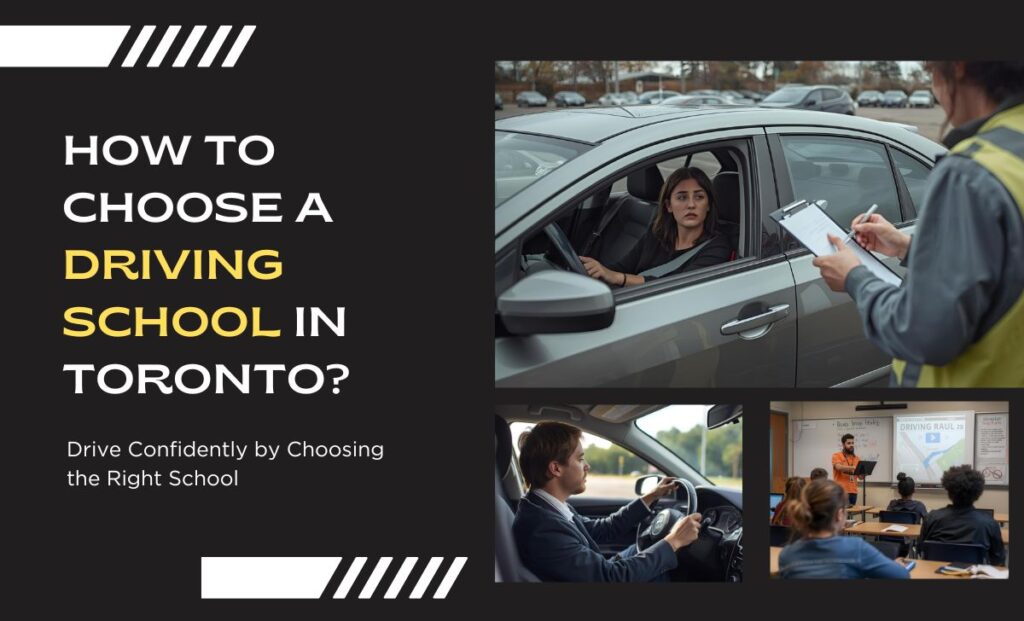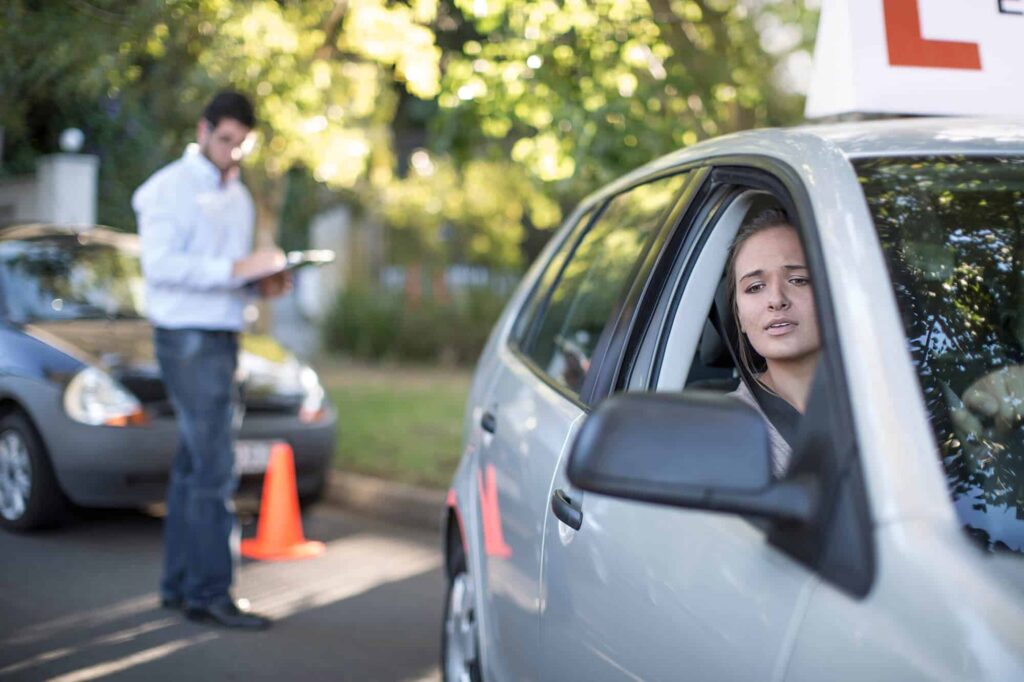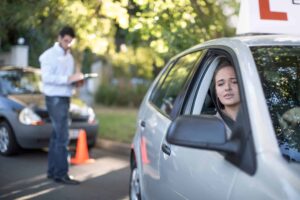Learning to drive in Toronto can be exciting but also a little scary at first. Busy streets, sudden streetcars, cyclists weaving through traffic, and pedestrians everywhere can feel overwhelming.
The good news is that knowing how to choose a driving school in Toronto can make learning much easier. The right school keeps you safe, teaches the skills you need, and makes driving fun.
This guide will help you pick the best school, understand different lessons, and get the most out of your practice. You’ll also find real student stories, helpful tables, sample schedules, winter driving tips, and a FAQ section with questions beginners really ask.
Why Choosing the Right Driving School Matters
The school you pick affects your confidence, skills, and how well you do on the G1, G2, and full license tests.
Confidence and Safety
Good instructors teach more than just driving. They show you how to stay calm, notice hazards, and make safe decisions. A patient, knowledgeable instructor can turn anxiety into confidence, even for the most nervous beginner.
Real Story: Sarah was terrified of merging onto highways. Her instructor started her on quiet streets, then gradually introduced busier roads. By the time she reached the highway, she was calm and confident, passing her G2 test on the first try.
Test Preparation
MTO-approved schools focus on what examiners look for during the G2 test. This ensures you are ready for city streets, highways, and tricky situations, including streetcars and one-way streets.
Time and Money
Structured lessons save time and prevent repeated mistakes. Cheap, unorganized schools may seem like a bargain, but extra lessons after failing a test can cost more in the long run.
Long-Term Driving Habits
Good schools teach habits that last a lifetime. Proper signaling, checking mirrors, making lane changes, and being aware of hazards are not just skills for passing tests. They are the skills that keep you safe every time you drive.
Real Story: Alex went to a cheap, unapproved school. Cars were old, highway lessons were skipped, and he failed the G2 test. After switching to an MTO-approved school with modern vehicles and structured lessons, he passed confidently on his first try.
How to Choose A Driving School in Toronto
Picking the right driving school can make learning to drive in Toronto simple and stress-free. The right school gives you patient instructors, safe cars, and lessons that build real confidence on busy city streets.
Step 1: Look for MTO Approval
The Ministry of Transportation of Ontario (MTO) sets rules for all driving schools. Choosing an approved school ensures instructors, curriculum, and vehicles meet safety standards.
| What to Check | Why It Matters |
| Certified Instructors | Licensed and trained to teach beginners |
| Curriculum | Covers G1 and G2 tests |
| Safe Cars | Dual-control cars for safety |
| Insurance | Protects you in case of accidents |
Tips:
- Always ask to see proof of MTO approval or check the official MTO website
- Avoid schools that cannot show proof
Real Story: A student attended a non-approved school and missed highway lessons, forcing them to pay for extra lessons after failing. An MTO-approved school would have avoided this.
Step 2: Evaluate the Instructor
Even the best school won’t help if the instructor isn’t patient. Your instructor is your coach. Their teaching style can make learning stressful or enjoyable.
| Look For | Why It Matters |
| Experience with beginners | Knows common mistakes and how to explain clearly |
| High pass rate | Shows teaching actually works |
| Patience | Helps you feel confident |
| Knowledge of Toronto traffic | Prepares you for real streets |
Real Story: One student was nervous about merging onto highways. Their instructor started on quiet streets, gradually increasing traffic exposure. Step-by-step encouragement built confidence.
Tip: Ask instructors how they handle nervous students and if they can demonstrate step-by-step teaching on busy intersections.
Step 3: Decide on Lesson Type
Toronto driving schools offer several lesson formats. Each has benefits depending on your goals and schedule.
| Lesson Type | Pros | Cons | Best For |
| Private Lessons | One-on-one, faster learning | More expensive | Beginners needing extra help |
| Group Lessons | Cheaper, learn with peers | Less personal attention | Theory practice or social learners |
| Package Programs | Structured, step-by-step | Less flexible schedule | Beginners wanting full programs |
| Refresher Lessons | Focus on specific skills | Limited scope | Learners needing extra practice |
Example: A student struggled with parallel parking. Private lessons allowed the instructor to spend extra time until they felt confident.
Step 4: Lesson Flexibility and Scheduling
Consistency matters. Look for schools offering:
- Morning, evening, and weekend lessons
- Easy rescheduling if needed
- Weekly lessons to prevent skill fade
Example: A learner with lessons once a month forgot skills between sessions. Another learner had weekly lessons and steadily improved.
Tip: Even 30–60 minutes weekly can make a big difference. Pair lessons with short daily drives if possible.
Step 5: Vehicle Safety and Comfort
The car matters as much as the instructor.
| Feature | Benefit for Beginners |
| Dual-control cars | Instructor can step in if needed |
| Modern vehicles | Working mirrors, brakes, and indicators |
| Automatic or manual options | Practice based on preference |
| Adjustable seats | Better visibility and comfort |
Tip: Avoid old or unsafe cars because they can make learning more stressful. Modern cars with dual controls help beginners feel safe and confident while practicing.
Step 6: Compare Costs and Packages
Price matters, but structure and quality are more important.
| Factor | Considerations |
| Hourly rates vs packages | Packages may save money |
| Discounts | Check for bundles |
| Inclusions | City driving, highway lessons, and parking |
| Refunds | Some schools offer partial refunds if canceled |
Example: A student paid a little more for a 20-lesson package and passed the G2 test on the first try, avoiding extra lessons.
Step 7: Curriculum Content
Good schools cover all essential skills:
- City Driving: Intersections, one-way streets, streetcars, pedestrians, cyclists
- Highway Driving: Merging, lane changes, exits, maintaining distance
- Parking: Parallel, angle, reverse
- Safety Habits: Mirror and shoulder checks, signaling, hazard awareness
- Test Prep: Skills aligned with the G2 road test
Real Story: A school gave learners a checklist for each lesson. Students could see mastered skills and areas needing extra practice.
Sample 15-Hour Beginner Lesson Plan
| Hour | Skill Focus | Practice Notes |
| 1-2 | Car controls & starting/stopping | Quiet parking lot |
| 3-4 | Turns & intersections | Low traffic suburban streets |
| 5-6 | City driving & traffic lights | Residential neighborhoods |
| 7-8 | Highway merging & lane changes | Low-traffic highways |
| 9-10 | Parking: parallel & angle | Empty parking lot |
| 11-12 | Downtown driving: one-way streets | Busy streets with streetcars |
| 13-14 | Test simulation | Mock G2 route |
| 15 | Review & feedback | Identify areas for improvement |
Step 8: Toronto-Specific Experience
Toronto has unique driving conditions:
- Busy downtown streets with streetcars
- Cyclists weaving between cars
- One-way streets and complex intersections
- Winter snow and ice
- Rush-hour traffic
Example: A learner confident on suburban streets panicked near streetcars downtown. Gradual exposure and step-by-step guidance helped them gain confidence.
Tip: Ask instructors if they know neighborhoods like Scarborough, North York, or Etobicoke. Local knowledge matters.
Winter Driving Table
| Skill | Practice Tip |
| Braking | Brake gently, increase following distance |
| Skidding | Practice on empty snowy parking lot |
| Lane changes | Signal early and move slowly |
| Parking | Use cones to practice controlled stops |
Step 9: Reviews and References
Before choosing a driving school, checking reviews and asking for references can save a lot of stress later. Look for what past students say about:
- Instructor patience and teaching style: A calm, clear, and supportive instructor makes learning easier and more enjoyable.
- Lesson quality and effectiveness: Were the lessons structured? Did students feel confident after each session?
- Vehicle condition and safety: Students often mention whether the cars were clean, modern, and well-maintained.
- Scheduling flexibility: Can lessons be booked at convenient times, including evenings or weekends?
Tip: Focus on reviews from the past 6 to 12 months. Instructors or schedules can change, so recent feedback is more reliable. Also, consistency in instructors matters. Working with the same instructor allows them to understand your progress and tailor lessons to your needs.
Extra Step: Ask friends, family, or classmates for recommendations. Word of mouth can often point to hidden gems that reviews alone might miss.
Step 10: Extra Resources
Many top-rated driving schools offer extra resources that make learning faster, safer, and less stressful. These can include:
- Online theory lessons and quizzes: Great for reinforcing road rules and preparing for the written test.
- Simulator sessions: Perfect for nervous beginners or those who want extra practice before hitting busy streets.
- Apps or progress tracking: Helps you monitor skills, track mistakes, and see improvement over time.
- Guidance for booking the G2 test: Some schools even help schedule your test and advise on the best time to take it.
Recommended Apps and Resources
| Resource | Purpose |
| DriveSim App | Virtual practice for city and highway driving, helps you get comfortable with traffic scenarios. |
| RoadSigns Quiz | Learn traffic signs and road rules in a fun, interactive way. |
| MTO Official PDF | Review Ontario’s driving handbook, including rules, penalties, and safe driving practices. |
| YouTube Channels | Watch city driving tutorials for beginners and see real-life driving situations. |
Tip: If your school doesn’t have simulators, you can create a similar experience on quiet streets or empty parking lots. Practice parking, lane changes, or highway merging in low-pressure settings. This builds confidence before tackling busier roads.
Common Mistakes Beginners Make
Learning to drive is exciting, but beginners often fall into predictable traps. Spotting these early can save time, stress, and money.
Choosing only based on price
Many new drivers assume the cheapest school is the best deal. The problem is that lower fees can mean shorter lessons, less structured teaching, or older cars.
How to avoid it: Balance cost and quality. Spending a little more for structured lessons, experienced instructors, and safe, modern cars is usually worth it.
Ignoring MTO approval
Skipping this step is risky. Instructors might be uncertified, and cars may not meet safety standards.
How to avoid it: Always check that the school is an MTO Approved Driving School in Toronto. This ensures trained instructors and safe vehicles.
Skipping vehicle checks
Old or poorly maintained cars can make learning stressful and unsafe.
How to avoid it: Make sure the school uses modern dual-control vehicles. These give beginners a sense of safety and confidence behind the wheel.
Not checking instructor experience
Inexperienced instructors can slow your learning and leave gaps in your skills.
How to avoid it: Ask about instructors’ experience, teaching styles, and success rates. Experienced teachers know how to guide beginners efficiently.
Overlooking lesson flexibility
Rigid schedules make it harder to practice consistently.
How to avoid it: Choose a school that offers flexible lesson times. Consistent practice is key to building confidence.
Ignoring curriculum quality
Some lessons focus only on passing the test and not on real-world driving.
How to avoid it: Check that the school covers city streets, highways, parking, and hazard awareness. These skills matter long after the test.
Not tracking progress
Without tracking, mistakes repeat and improvement slows.
How to avoid it: Keep a driving journal to record what you practiced, what went well, and what needs work. Reviewing it regularly reinforces good habits.
Hesitating to ask questions
Beginners often stay silent because they worry about looking inexperienced.
How to avoid it: Ask questions freely. Instructors expect them and will help you understand tricky maneuvers.
Pro Tip: Use a driving journal. Note mistakes, achievements, and goals. Over time, you will see how far you have come and where to focus next.
Getting the Most Out of Lessons
Passing your driving test is exciting, but feeling confident behind the wheel is even better. Here’s how to make the most of your lessons:
Focus on One Thing
Pick one skill each lesson, like parking, lane changes, or merging onto the highway. Doing one thing at a time makes it easier to improve.
Take Notes
Write down tips from your instructor and mistakes you made. Reading them before your next lesson helps you remember and avoid the same errors.
Practice Outside Lessons
Drive a little with a responsible friend or family member in quiet areas. Short practice sessions help build confidence and make driving feel natural.
Try Real Conditions
Practice on busier streets, parking lots, and highways. Getting used to real traffic makes the test and everyday driving less stressful.
Stay Calm
Take deep breaths, imagine yourself doing it right, and tell yourself you can do it. Staying calm helps you drive better and learn faster.
Keep Track
Write down what you practiced and what got better. Seeing even small improvements keeps you motivated.
Ask Questions
If you’re unsure, ask your instructor. Understanding why you do something makes learning faster and easier.
Think About Each Lesson
After every lesson, think about what went well and what needs more work. It helps you improve faster.
Practice Often
Try to drive regularly instead of waiting too long between lessons. The more you drive, the more confident you get.
Celebrate Wins
Notice your progress. Managing a tricky parking spot or driving on a busy street without stress is a win. Little wins keep learning fun.
Pro Tip: Short, daily drives of 15 to 20 minutes make a bigger difference than long, irregular practice sessions. Consistency is more important than intensity when building driving confidence.
FAQs for Beginners in Toronto
How do I know if a school is MTO approved?
Ask to see proof or check the MTO website. Approved schools have certified instructors and safe cars.
Private or group lessons. Which is better?
Private lessons give personal attention and are good for tricky skills. Group lessons are cheaper and work well for theory learning.
Do I need my own car for lessons?
No. Most schools provide dual-control cars so you can learn safely.
How many lessons do I need before G2?
Usually 15 to 20 lessons plus extra practice outside school.
What should I practice outside lessons?
Focus on one thing at a time such as parking, intersections, lane changes, and merging onto highways.
How do I deal with nerves while driving?
Take deep breaths, start on quiet streets, and practice slowly. Confidence builds with time and experience.
Can I learn to drive safely in winter?
Yes. Keep a safe distance, brake gently, and watch for ice. Instructors guide you through winter driving.
How do I pick the right instructor?
Look for patience, experience with beginners, and knowledge of Toronto streets.
What if I meet aggressive drivers?
Stay calm, keep distance, and follow traffic rules. Safety comes first.
How long does it take to pass G2?
Usually three to six months with regular lessons and practice, but it depends on your confidence and skills.
Final Thoughts
Choosing the right driving school is the first step to feeling confident on the road. A good school provides patient instructors, safe cars, and structured lessons that help learners improve step by step.
Driving takes time. Mistakes are normal. Every lesson is a chance to improve. Practice outside lessons, focus on one skill at a time, and pick a school that feels right.
Good schools prepare learners for real Toronto driving. Busy streets, highways, parking, and even winter conditions become manageable with guidance. Practice, ask questions, and track your progress to build confidence.
Remember: every lesson counts. Small wins build confidence, mistakes teach lessons. With the right instructors and effort, passing the G2 test and driving safely on your own is achievable.
Ready to start driving with confidence in Toronto? Book your first lesson today with an MTO-approved driving school and take the first step toward freedom and independence on the road.






